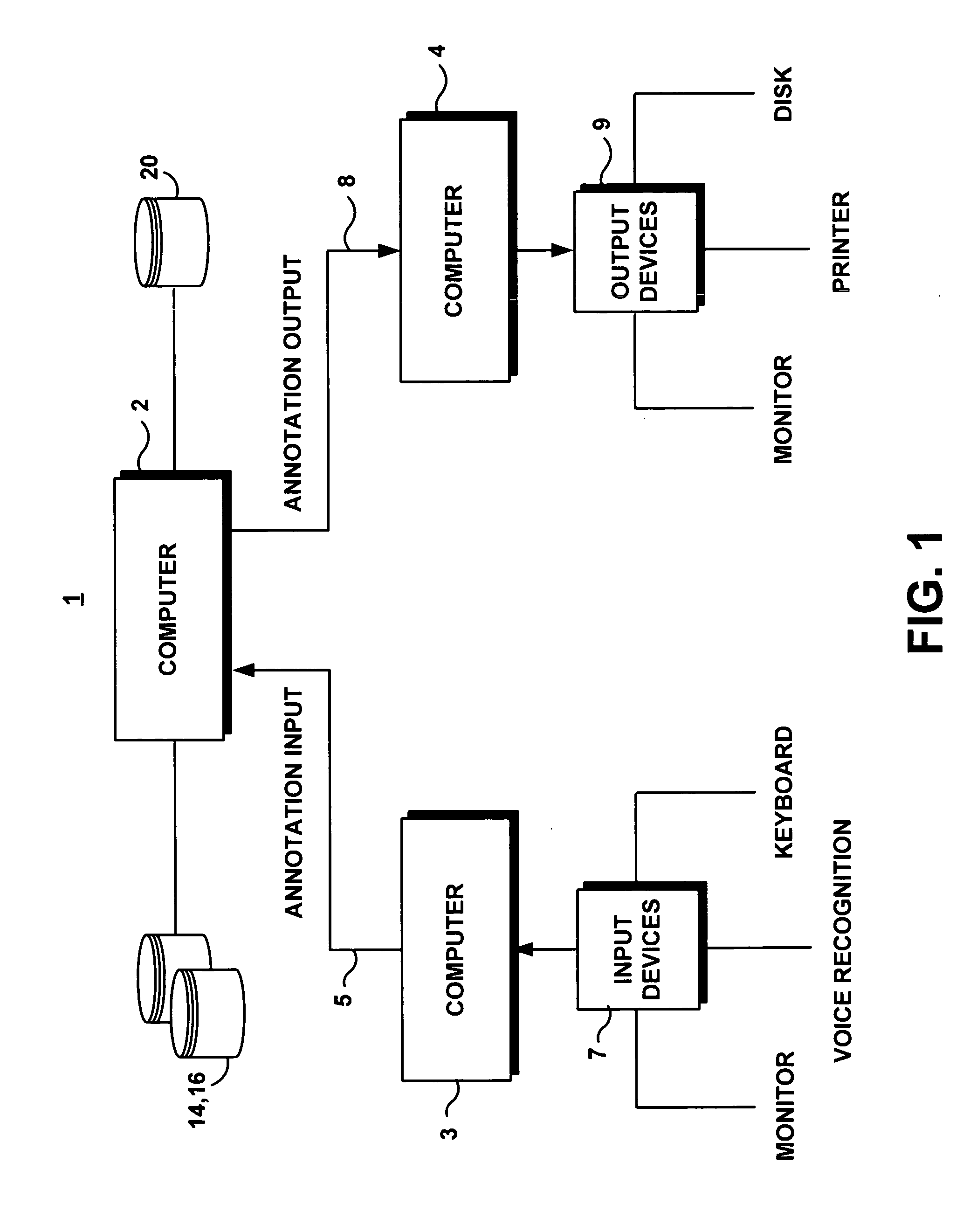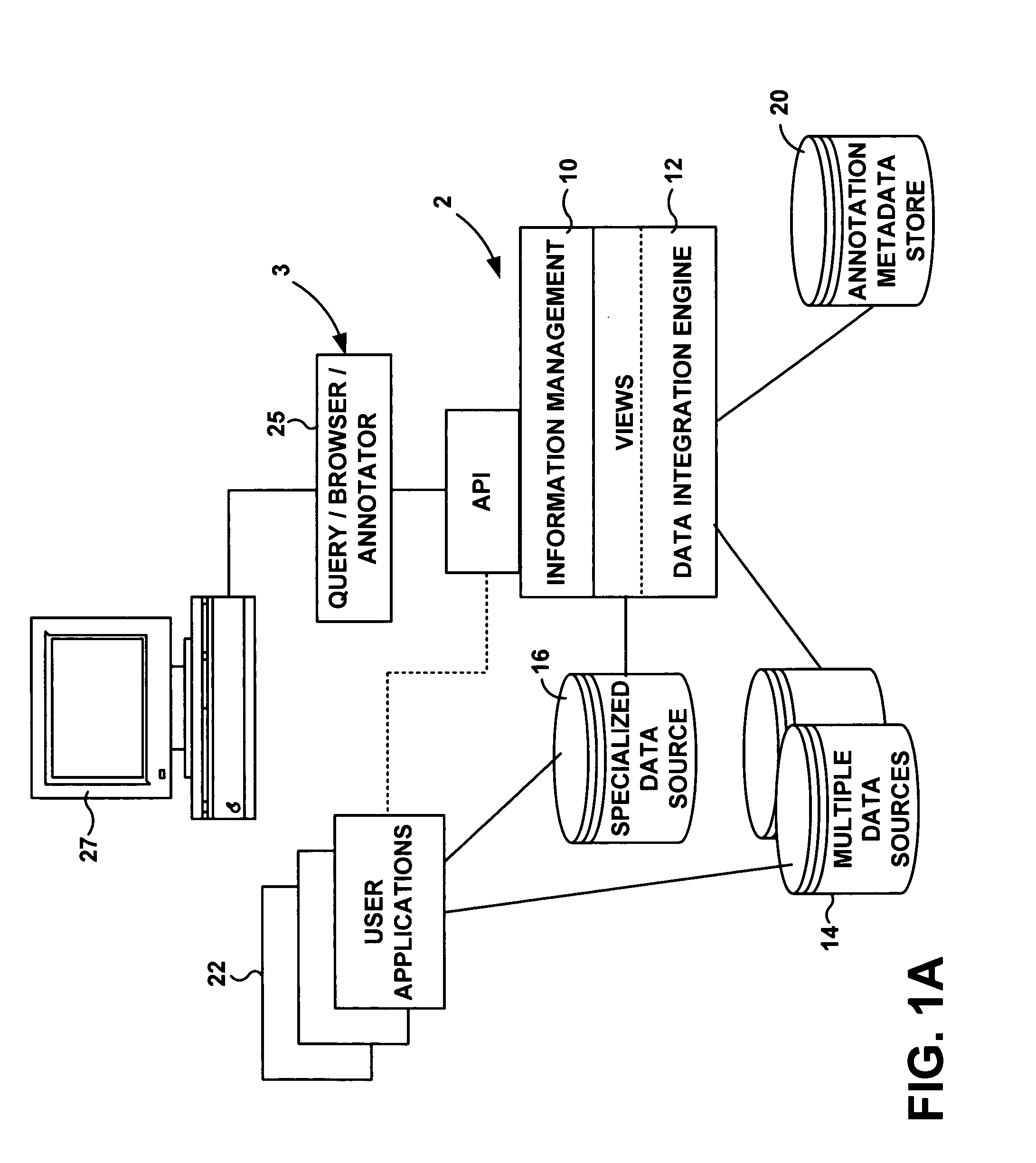System for annotating a data object by creating an interface based on a selected annotation structure
a data object and annotation structure technology, applied in the field of data entry and retrieval, can solve the problem of more data with little useful conten
- Summary
- Abstract
- Description
- Claims
- Application Information
AI Technical Summary
Benefits of technology
Problems solved by technology
Method used
Image
Examples
Embodiment Construction
[0049]FIG. 1 illustrates a system 1 that might be utilized to practice the teachings of the present invention. The system 1 includes a plurality of computers or processors 2, 3, 4. While for purposes of illustration the computers 2, 3, 4 are described as possessing specialized functions, it should be clear that any one, or a combination of the computers 2, 3, 4 can be used to generate the annotations, and to search the data and annotations sources (e.g. databases) as described herein.
[0050] As further illustrated in FIG. 1A, computer 2 hosts an information management system 10 of the present invention, and includes, or is connected to one or multiple databases 14, 16 to be searched. Computer 2 is interconnected to computer 3 via an annotation input link 5 for allowing annotations to be inputted from computer 3 to computer 2. The annotation input can be from a user of, for example, a graphical user interface (GUI) application, or from a software application, running for example on c...
PUM
 Login to View More
Login to View More Abstract
Description
Claims
Application Information
 Login to View More
Login to View More - R&D
- Intellectual Property
- Life Sciences
- Materials
- Tech Scout
- Unparalleled Data Quality
- Higher Quality Content
- 60% Fewer Hallucinations
Browse by: Latest US Patents, China's latest patents, Technical Efficacy Thesaurus, Application Domain, Technology Topic, Popular Technical Reports.
© 2025 PatSnap. All rights reserved.Legal|Privacy policy|Modern Slavery Act Transparency Statement|Sitemap|About US| Contact US: help@patsnap.com



